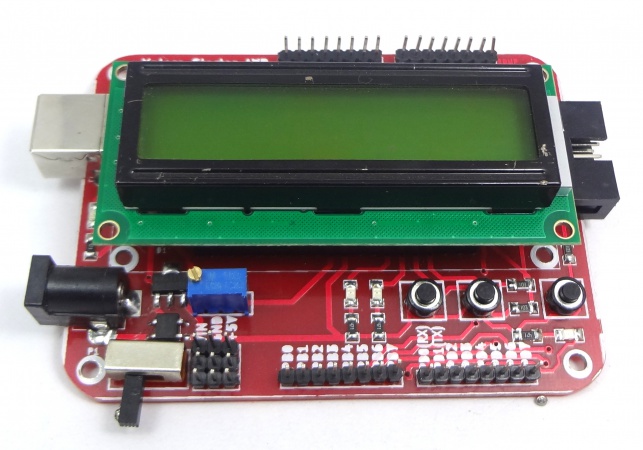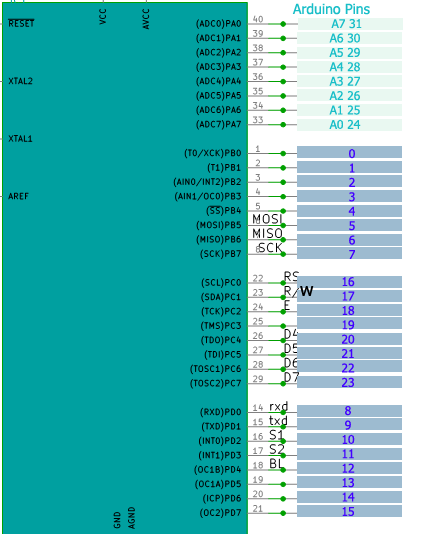
Contents
Features
- Atmega32 MCU
- 32K bytes of In-System Self Programmable Flash Memory
- 1024 bytes EEPROM
- 2K bytes Internal SRAM
- 32 IO pins
- UART, SPI, JTAG and I2C support.
- Real Time Counter with Separate Oscillator
- Four PWM Channels**8-channel, 10-bit ADC
- 8 Single-ended Channels
- 2 Differential Channels with Programmable Gain at 1x, 10x, or 200x
- USB Interface CP2102: for communicating with the host computer.
- LCD Interface: 16 characters, 2 lines
- Test Leds (2) and Switches(2)
- 5X2 ISP Programmer Connector
- Breakout for all Ports
- Breakout for +5v,Gnd and Vin
- Power Supply compatible with AC/DC adapters(9 to 12V DC, 1A).
Physical Features
- Dimensions: 70mm X 90mm
- 1.6mm Glass Epoxy, FR4 PCB
- Wave Soldered.
Downloads:
Setting up the XploreFlash Programmer
Step 2:To connect Development board with computer USB driver is required. Windows USB to UART Drivers for CP2102
- For Other Operating system please download from Silicon Labs website.
Step 3: Download and install XploreFlash GUI. (XploreFlash GUI is based on AVRDUDESS)
Step 4: Follow the steps on images below to flash the board.
Note: The GUI software will require .NET framework 2.0 or later please download and install it.
{{#seo: |title=AVR_Atmega32_Development_Boards |titlemode=append |keywords=Atmega32, AVR 32pin Development board, AVR Starter board. |description=AVR Development Boards }}
Using Starter AVR with Arduino Software
The Starter AVR USB development board has Atmega32 on board, it can be used with Arduino Software. Below are the details on how to set it up.
PIN Mapping

We need to add a file to the Arduino Installation on your computer in order to inform it about the pin mapping for atmega32.
Find the path similar to one below on you computer:
C:\Program Files\Arduino\hardware\arduino\variants\mega32
Support
For Questions, technical support and feedback about this product, do comment below!







